Do keyword research in a simple way using the Semrush keyword research process.
This is the tool that I'm using for my entire keyword research for my blogs to identify the right keywords.
Let's jump straight into how to do keyword research using Semrush.
Try Semrush for 7 Days Free
What is Keyword Research?
Keywords are words or phrases people type into search engines when looking for information, product reviews, or other things.
It's important to figure out which words people use in their searches, as these are your keywords.
In keyword research, you can identify the following:
- Search intent
- keyword volumes
- Keyword difficulty and more
For this, let's use the Semrush tool for keyword research.
Please stick with me.
Keyword Research Features in Semrush
I've listed the keyword research features in Semrush for quick reference:
- Keyword Magic Tool
- Semrush Keyword Overview
- Keyword Strategy Builder
- Keyword Gap
Let's explore these features to gain a deeper understanding of them.
I am digging deeper.
Steps to do Keyword Research in Semrush?
I will explain how to do effective keyword research using my experience with Semrush. You can log in for a free trial and try to follow the steps as well.
1. Find Keywords with the Keyword Magic Tool
On the left side, click on the Keyword Magic tool to input your keyword.
For instance, I typed Semrush review in the search bar.
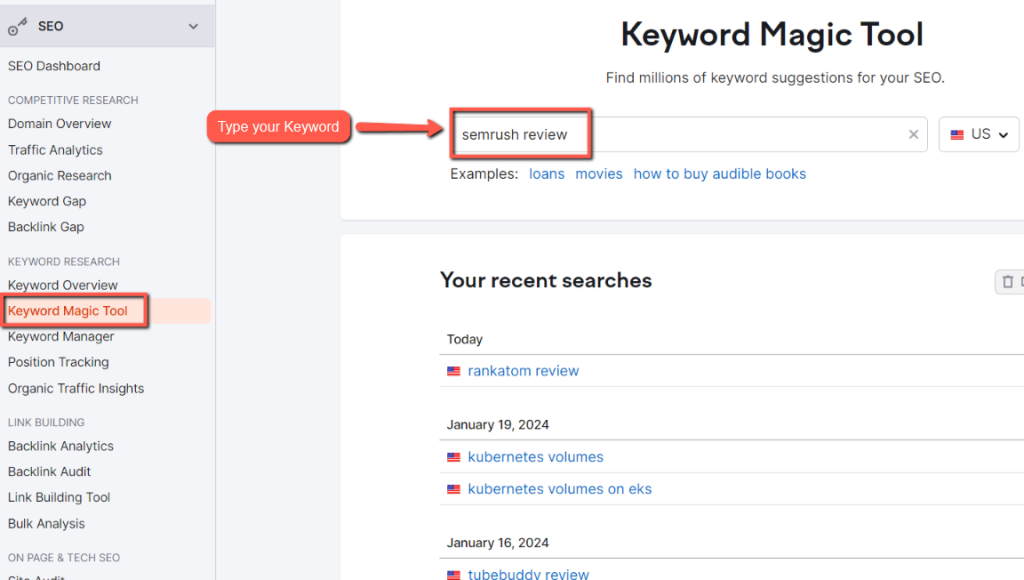
It also gives me a list of keywords related to the entered keyword, as shown in the image below.
It provides me with 86 keywords for my search.

It shows you the keyword intent, volume, Keyword difficulty (KD), and CPC to understand what people are most looking for.
Also, you have options to see phrase match, exact match, and related keywords.
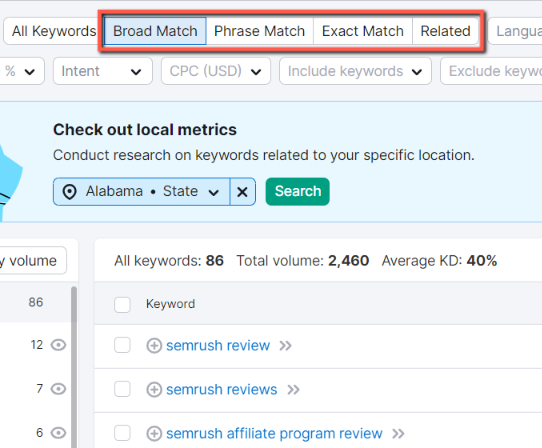
This option makes it even easier to identify the right keyword.
Use this Semrush keyword magic tool to identify the hidden keywords for your SEO strategy.
Do you want to know if Semrush is the perfect SEO tool for you?
Then, read the Semrush Review to know more about it.
Let's jump to the next step...
2. Keyword Overview In Semrush
To get an overview of your chosen keyword, click on the keyword you want to know.

This will display details like volume, global volume, intent, keyword difficulty (KD), trend, CPC, and competitive density, as shown in the image below.
This information is crucial for understanding the value and competitive level of the keyword.
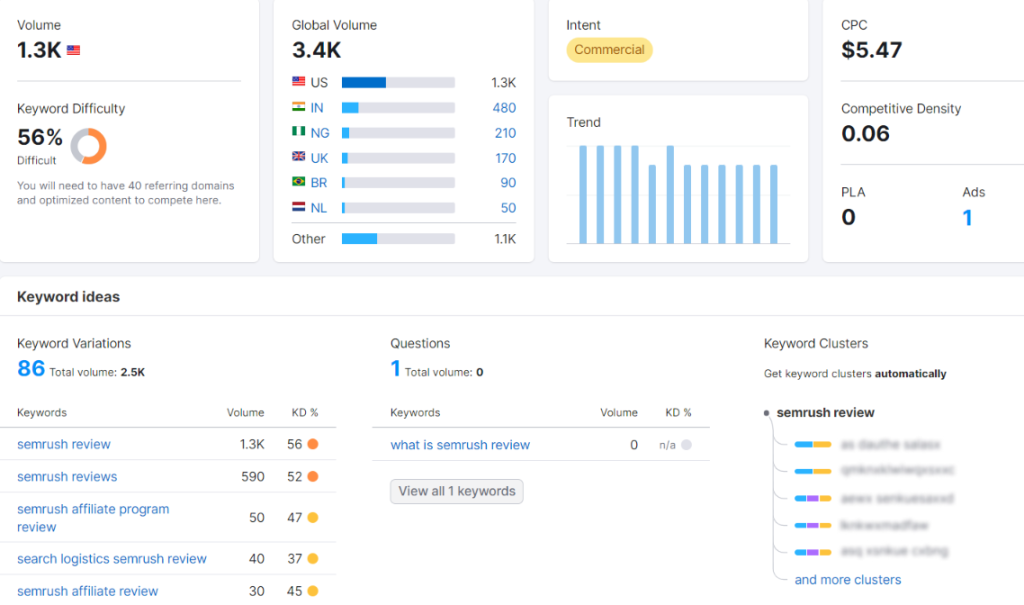
Moreover, there's a new feature that automatically groups similar keywords.
To access this, click on 'View all clusters'.
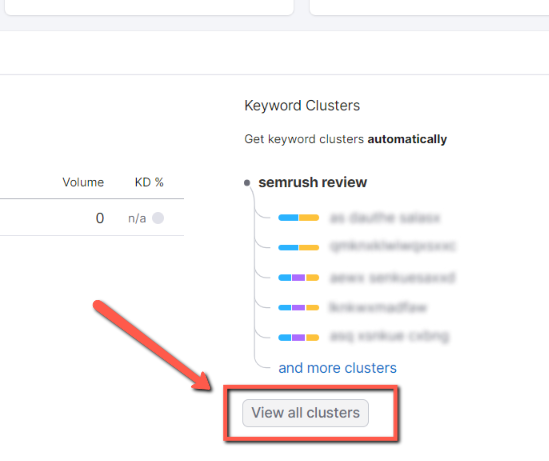
This will present a list of clustered keywords, essential for staying ahead of competitors and potentially achieving better search engine rankings.
As you can see in the image below, this feature provided me with seven high-potential keywords related to my main keyword.
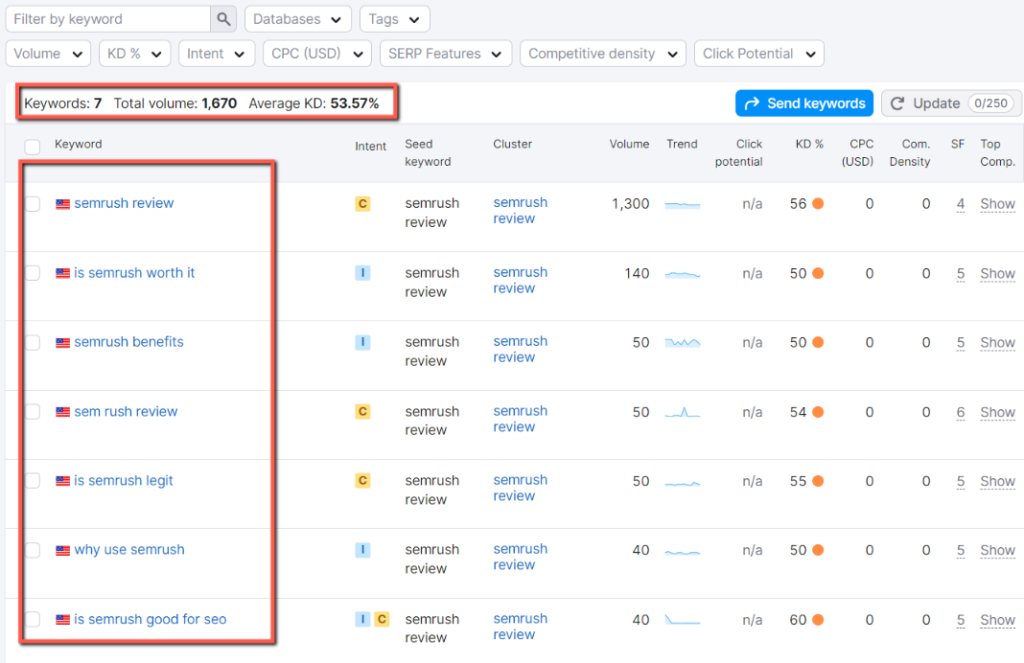
Utilizing these keyword clusters is a highly effective strategy for ranking on search engine results pages (SERPs).
The keyword overview also shows you the top 100 blogs in SERP for your targeted keyword.
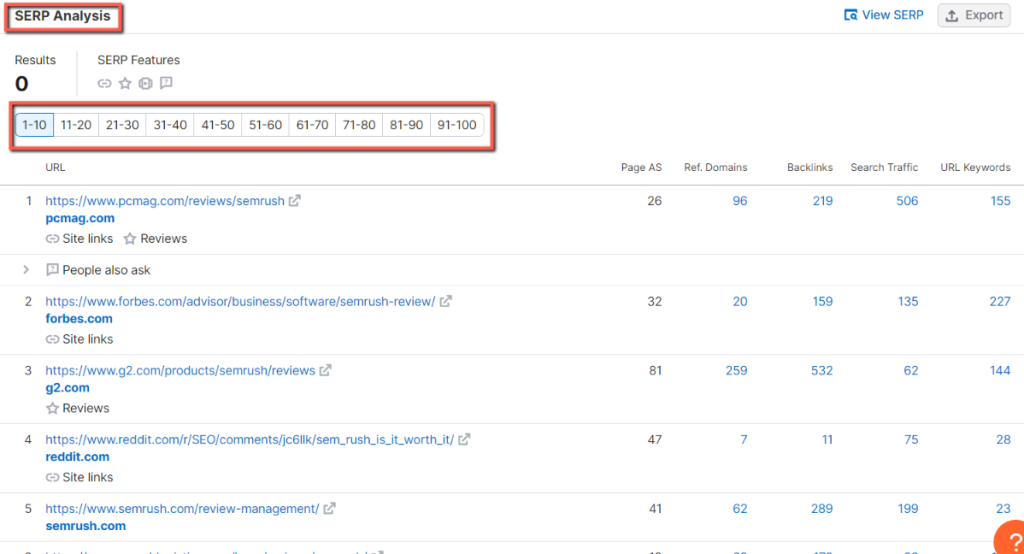
This will help you to analyze your competitor's SEO strategies.
Next up is...
3. Use Keyword Strategy Builder to Cluster Keywords
In this keyword Startegy Builder tool, you can group keywords, a process known as clustering.
Here's how to do it:
First, pick your primary keyword. Then, select five related keywords that complement your chosen main one.
For instance, in my case, 'video SEO' is my main keyword.
- Video SEO
- What is Video SEO?
- Video SEO Tools
- Video SEO Statistics
- How to Optimize Video SEO for YouTube

Based on this, I've selected four related keywords to create a balanced group.
Make sure to choose your keywords wisely.
The image provided shows that this approach resulted in 32 clusters comprising 636 keywords, including three with high-ranking potential.
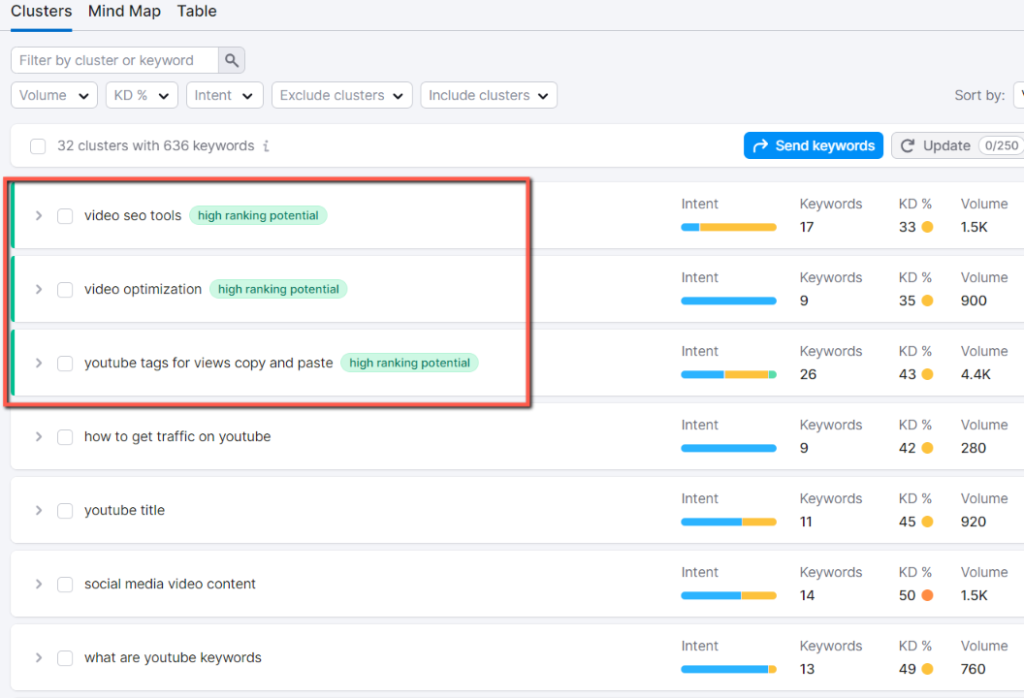
It's essential to select your keywords and strategically incorporate them into your blog posts.
Additionally, the tool offers a feature that shows a map for adding subtopics under each main topic.
This can significantly improve your chances of ranking well.
Here is the full guide on how to do keyword clustering with Semrush.
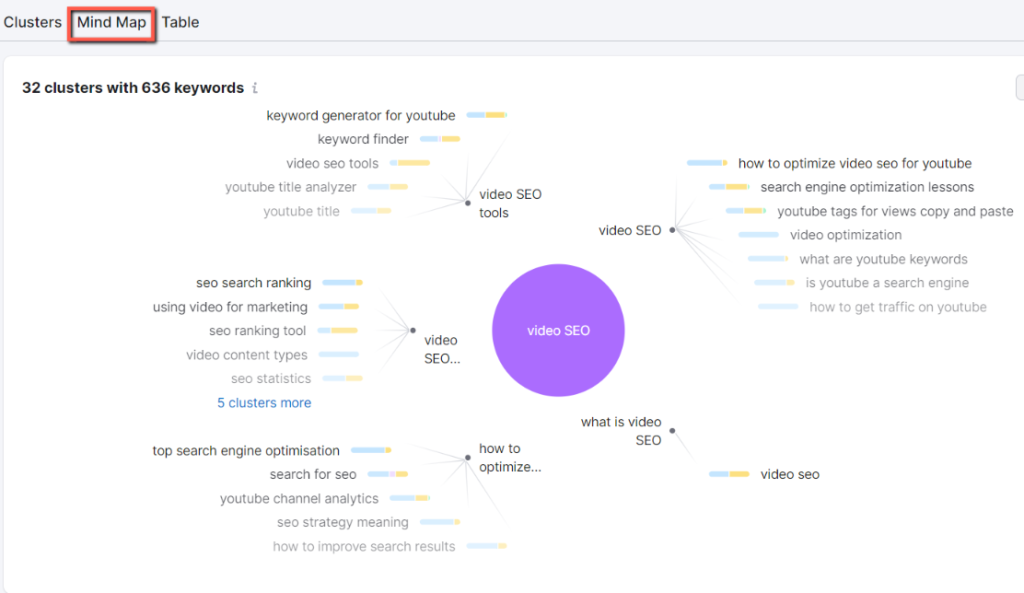
I hope you find this method helpful for your blog.
Check Out the Plans from Semrush with discounts.
How to Track Your Keywords?
Keyword tracking is important because it shows the drop in your targeted keywords in SERPs.
So, if a keyword drops, you can update it with new information, and the ranking may increase, allowing you to sustain a competitive edge.
To track keywords, I'm using the Semrush Position Tracking tool.
In the image below, you can view the keywords that I'm tracking for Comtechies.
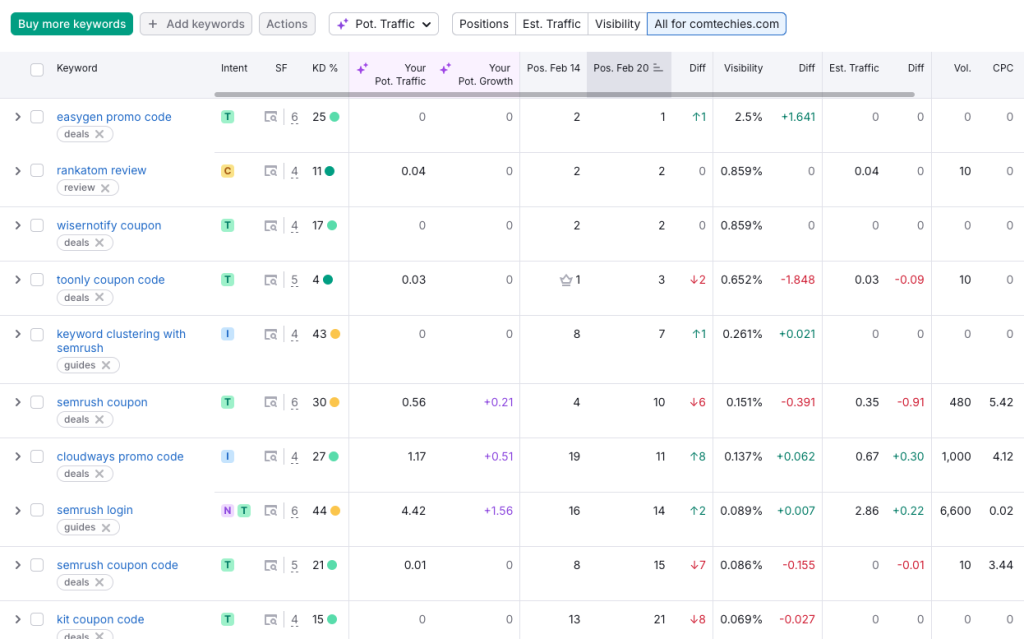
You can customize by date and view the dropping and increasing of keywords as well.
You can also view the 3-month potential traffic or growth of your keywords. It is an AI-powered feature of Semrush that predicts and analyzes the potential for increasing traffic for tracking keywords.
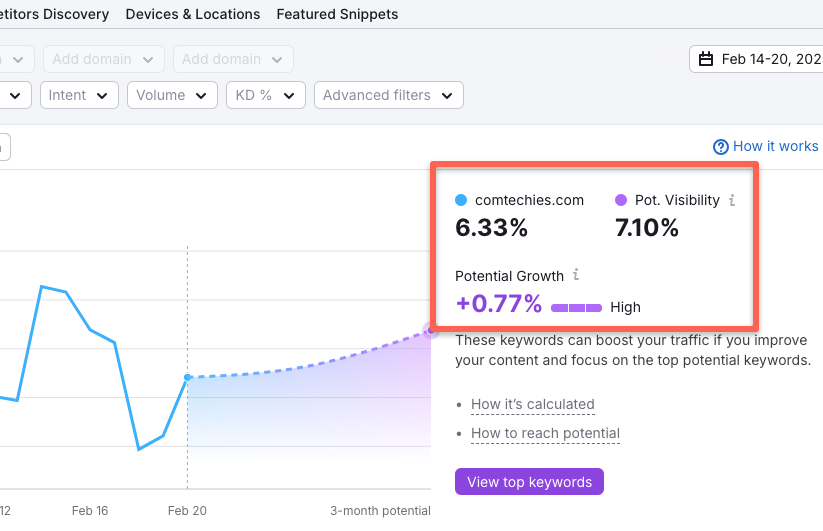
But, if you want that traffic, you should update the blog with new information and keep updating it. Only then will you receive the traffic, as shown in the graph.
Here is the detailed guide about Semrush postion tracking, setups, how to use it, and more
Also, here is the guide about potential traffic and how Semrush calculate it.
Conclusion
In conclusion, conducting keyword research when starting your blog is an innovative approach to creating SEO-friendly content.
Semrush is an excellent tool for conducting thorough and effective keyword research. Without this step, your content may not be well-aligned, and its chances of ranking high could be significantly reduced.
I recommend using Semrush for your keyword planning needs.
Are you already using Semrush for your keyword research?
If so, I would love to hear about your experiences with the tool.
I'm curious: what tool do you use for your keyword research?
Share your preferences and experiences!
Bonus Tip: Use the Semrush Coupon to claim your Semrush premium plans with discounts and you can get deals during Semrush Black Friday Deals.

